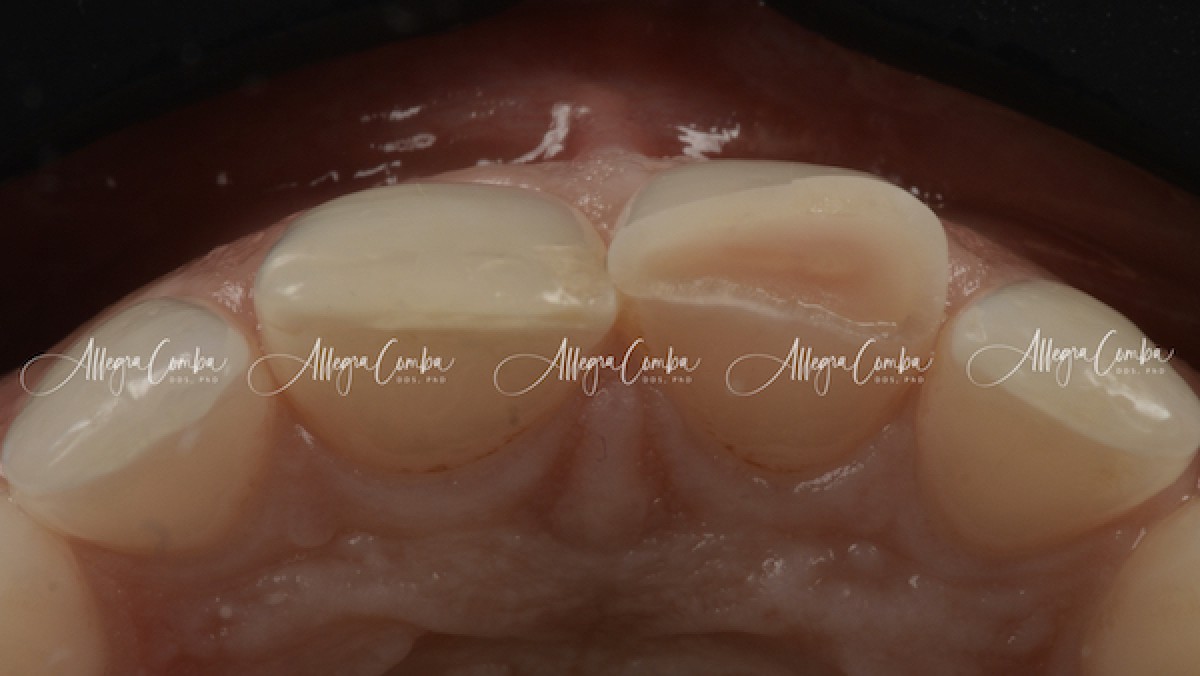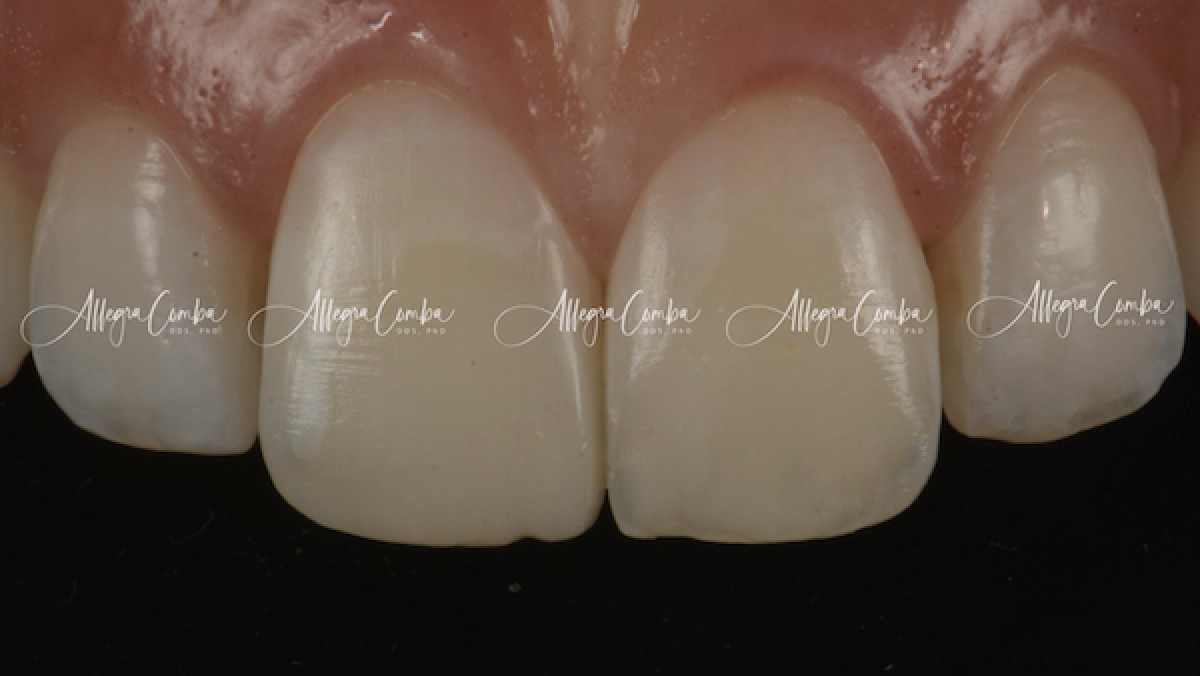
Fragment reattachment on 2.1 and direct composite reconstruction on 1.1: a clinical case
Allegra Comba
A 22-year-old female patient came to my attention after trauma involving the elements of the upper frontal sector. The patient reported having stored in water the fragment of one of the involved dental elements. The general medical history was negative.
The oral examination detected a coronal fracture without pulp involvement of 2.1 and a chipping of the old composite material on 1.1.
The radiographic examination highlighted the absence of root fractures of the elements involved in the trauma and did not detect the presence of carious lesions on the other dental elements. A pulp viability test was performed on the elements involved which resulted to be positive.
After explaining the patient the complications that may arise after a dental trauma, the decision was to continue with the initial photographs and the direct restorative therapy of the fractured elements. (Fig. 1)
Palatal view of fractured elements
The 1.1 was slightly palatalized, therefore in agreement with the patient, while replacing the old chipped composite, we would proceed with the alignment of the dental element with the 2.1 through a direct composite veneer. (Fig. 2)
Isolation of the operating field. (Fig 3)
Cavity preparation of 1.1 with 50 micron aluminum oxide powder (Fig. 4)
Application of 37% orthophosphoric acid for 30 s on enamel and 15 s on dentine (Fig. 5);
Primer application (Fig.6) and Bonding application (Fig 7) on 2.1.
Adhesive procedures on the coronal fragment stored in water by the patient after trauma (Fig. 8 and 9)
Reposition of the fragment with flowable composite (Fig. 10)
Element 2.1 after reattachment of the fragment and element 1.1 after cavity preparation. The old composite was removed with burs mounted on a red ring contra-angle and abrasive disks. (Fig. 11)
Etching and adhesive procedures performed on element 1.1 (Fig. 12 and 13)
Reconstruction of the palatal wall of 1.1 with the help of a silicone index and layering of the composite material (Fig 14)
Restorations completed under dental dam isolation (Fig. 15)
Color check after 2 months from the execution of the restorations (Fig. 16)
 Tag
Tag
 Read more
Read more
Editorials 10 October 2025
With proud smiles and crisp white coats, ninety-three learners from the DDS Class of 2029 and the International Dentist Pathway Class of 2028 marked the start of their dental careers at the UCSF...
Periodontology 10 October 2025
Continuous professional development (CPD) in Periodontology refers to the overall framework of opportunities that facilitate a life-long learning practice, driven by the learner-practitioner and...
TheraBreath, the #1 alcohol-free mouthwash brand in the U.S.*, has introduced a new line of dentist-formulated, clinically tested toothpastes designed to support professional oral care...
News 10 October 2025
New officers and trustees were installed at the Minnesota Dental Association’s Leadership Conference on September 19 in Minneapolis.
News 10 October 2025
Smartee Denti-Technology today announced that Professor Gang Shen, its Chief Scientist and Executive President of TaiKang ByBo Dental, has once again been named to the World’s Top 2% Scientists...


























